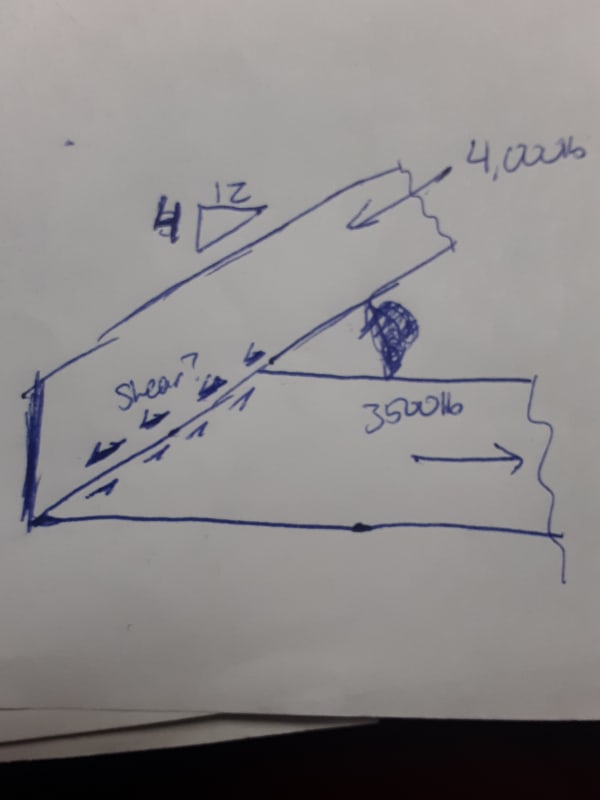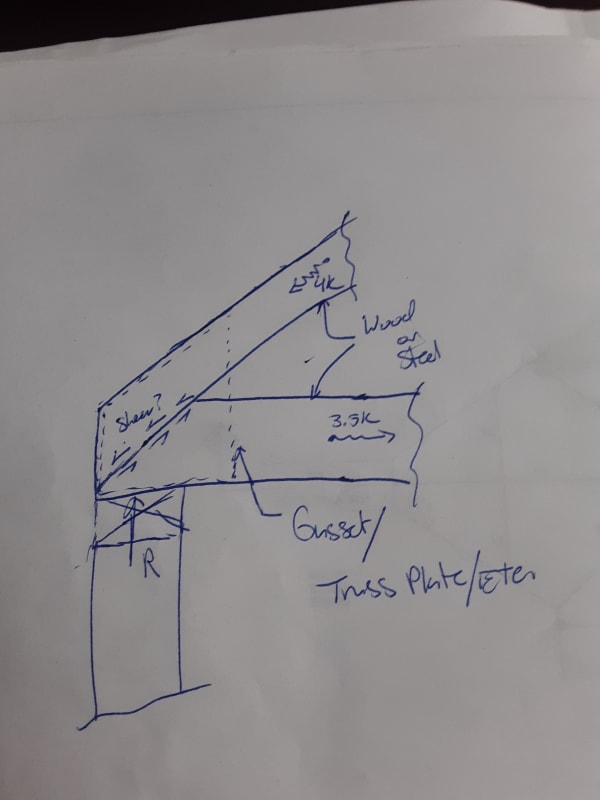406Eng
Structural
- Jun 27, 2019
- 9
Alright I am hoping someone can help me with some basic mechanics of materials, maybe I am just overthinking this but I can not decide the proper way to tabulate the shear stress. The attached image shows two members which will be fastened with a plate (much like the heel joint of a truss or rafter) I am trying to determine the shear forces that would act on such a plate. You have a member in compression at an angle and a member in tension along the horizontal plane. My question is this, how do you determine the "shear stress" the plate would experience acting along the joint between the two members? My thought is either you consider each force individually assuming that the plate is cantilevered from the other member or is it additive where you assume the plate experiences shear from both members simultaneously?



